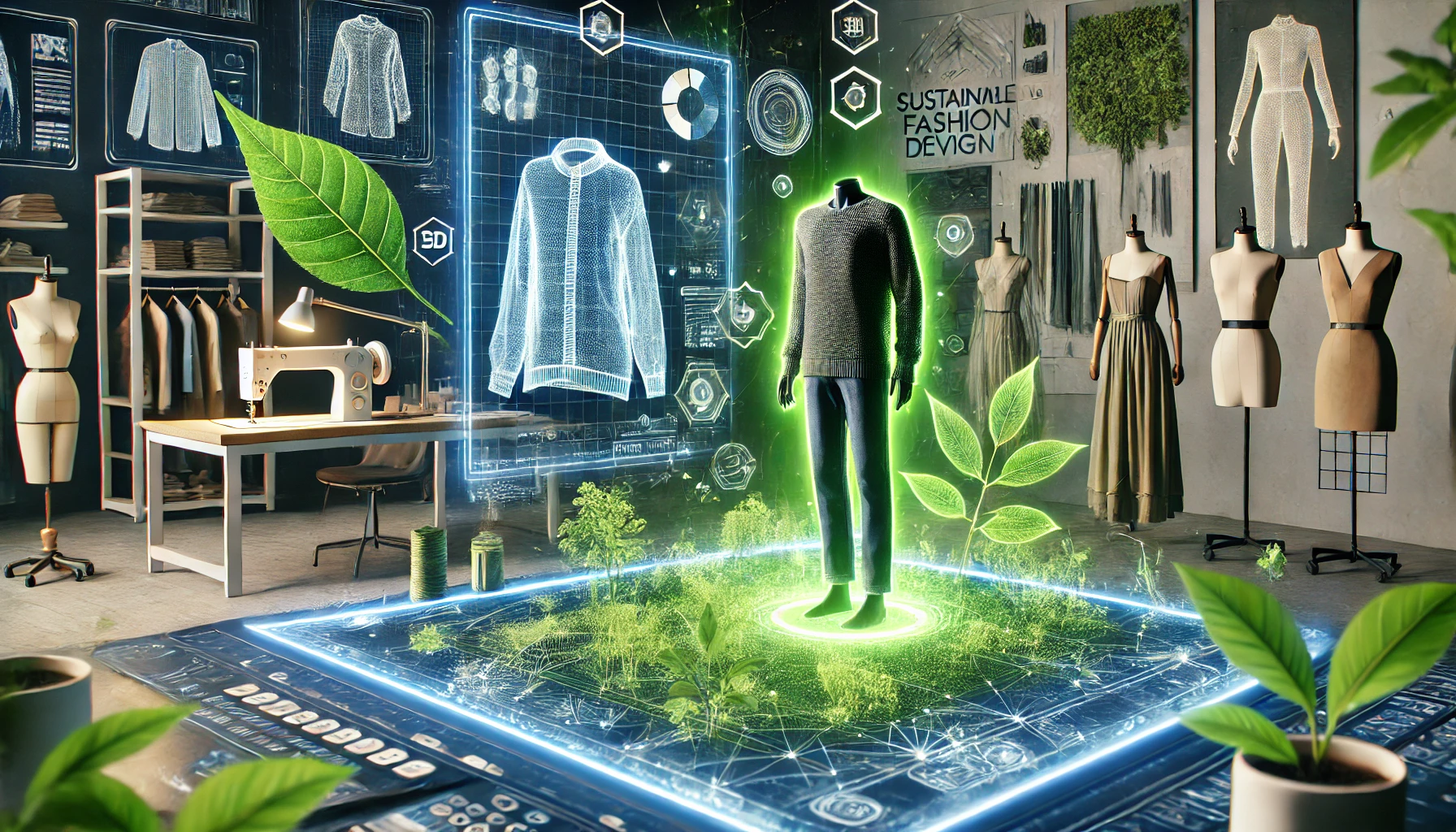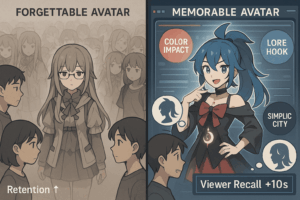The fashion industry is undergoing a profound transformation, fueled by the demand for sustainability, innovation, and efficiency. As environmental concerns intensify and consumer preferences shift towards more responsible consumption, 3D fashion design has emerged as a game-changer in the industry. This innovative approach to fashion design is helping fashion designers, fashion brands, and manufacturers reduce waste, speed up production, and meet market demands in ways previously unimaginable. Here’s a deeper look at why 3D fashion design is essential for sustainable fashion development.
What is 3D Fashion Design?
3D fashion design uses digital tools to create realistic virtual clothing. Instead of making physical samples, fashion designers use software like Marvelous Designer, CLO, or Optitex to design patterns, simulate fabric movement, and view their creations in 3D. These tools show how fabrics look and fit, making it easy to test designs digitally. This approach speeds up the design process, reduces material waste, and allows designers to experiment freely with styles and patterns. It’s like making digital versions of collections before using any fabric, saving time and resources.
The Role of 3D Fashion Design in Transforming the Fashion Industry
Traditional fashion design relies heavily on physical samples, requiring multiple versions of a garment to test fit, style, and function. This process often leads to wasted materials and inefficiency. With 3D fashion design, everything becomes faster, more precise, and sustainable.
Using 3D tools, fashion brands, and apparel companies can visualize and adjust designs digitally before making physical products. This means designers can explore ideas freely, create lifelike prototypes quickly, and avoid the trial-and-error of traditional methods. By reducing the need for multiple physical samples, 3D fashion design cuts waste saves materials, and lowers environmental harm. This shift offers a smarter, greener way to design clothing.
Sustainability and the Environment: A Key Focus for 3D Fashion Design
As the fashion industry faces growing pressure to become more sustainable, 3D fashion design offers a solution that aligns with the values of both consumers and brands. Sustainability isn’t just about using eco-friendly materials; it’s also about rethinking the entire design and production process.
By eliminating the need for physical prototypes, designers can significantly cut down on material waste. Moreover, 3D fashion design enables fashion companies to test out new materials virtually before committing to them, ensuring that only the best, most sustainable fabrics are used in final garment production.
As sustainability becomes a more pressing issue in the industry, leading fashion companies like Louis Vuitton and Hugo Boss are embracing 3D fashion design to streamline their processes and meet the rising demand for more responsible fashion. These companies are using 3D fashion tools to ensure that their collections are not only fashionable but also environmentally conscious.
How 3D Fashion Design Helps Meet Market Demands?
In today’s fast-paced fashion world, staying ahead of market trends is critical. With consumer preferences changing rapidly, fashion companies need a design process that can keep up. 3D fashion design helps meet market demands by shortening the time it takes to create, refine, and launch new collections.
The design development process becomes significantly faster with 3D fashion design. With the ability to create a virtual garment in hours rather than days, fashion designers and brands can respond quickly to shifting trends, ensuring that their collections align with consumer desires. Additionally, 3D tools allow designers to experiment with a wide range of styles and patterns to create designs that appeal to a variety of markets.
Virtual Clothing and Its Impact on Consumer Experience
The introduction of virtual clothing through 3D design has transformed how consumers engage with fashion. With augmented reality (AR) technology, shoppers can now visualize how garments will look on them before making a purchase. This eliminates the uncertainty of online shopping and reduces the likelihood of returns, improving customer satisfaction and brand loyalty.
For fashion brands, this offers a new way to connect with customers. Virtual clothing and 3D garment visuals allow brands to showcase their collections in dynamic ways. E-commerce platforms, for example, can display ultrarealistic images of garments, providing consumers with an immersive experience that replicates the in-store fitting room. This increased interaction with fashion products also leads to stronger brand affinity and deeper consumer engagement.
Key Benefits of 3D Fashion Design for Sustainable Development
3D fashion design has emerged as a game-changer for the fashion industry, offering innovative solutions to critical challenges like sustainability, efficiency, and consumer demands. Here are some of the key benefits that make it essential for sustainable development:
Reducing Material Waste:
Traditional fashion design processes generate significant material waste due to multiple rounds of physical samples. 3D fashion design allows designers to create digital samples, reducing the amount of material needed and contributing to sustainability.
Accelerating Production Speed:
3D fashion design enables brands to develop their collections faster. With the ability to visualize garments digitally, designers can quickly make adjustments and finalize designs, accelerating the production process.
Lowering Costs:
With reduced sampling, fewer materials, and faster production timelines, 3D fashion design offers cost-effective solutions for both small clothing designers and large apparel companies. This lowers the overall expenses associated with the fashion design process.
Meeting Consumer Preferences:
3D fashion tools allow designers to test various styles, ensuring that their designs meet the ever-changing consumer preferences. By providing virtual fittings and realistic garment simulations, brands can cater to what consumers want in real-time.
Minimizing Environmental Impact:
Through the reduction of material waste and energy usage in manufacturing, 3D fashion design directly contributes to a more sustainable industry, helping brands align with eco-conscious consumers and meet sustainability goals.
Virtual Fittings and the Power of Augmented Reality
Virtual fittings and augmented reality (AR) are taking the fashion industry by storm. With AR technology, fashion companies can offer consumers the ability to try on clothing virtually. This immersive experience not only enhances the shopping journey but also helps to minimize the waste associated with returns. By simulating how a garment will fit and look on the body, virtual fittings ensure that consumers are more confident in their purchasing decisions.
Additionally, augmented reality allows fashion brands to build more personalized and interactive shopping experiences. Brands like Louis Vuitton are already using AR to showcase their collections in unique and engaging ways. As this technology evolves, it will continue to play a significant role in consumer engagement and satisfaction.
Increased Efficiency and Cost-Effectiveness in 3D Fashion Design
3D fashion design transforms how garments are created by cutting down time, costs, and waste. Designers can make multiple virtual versions of a piece, slashing the time it takes to bring products to market by weeks or even months. This speed is vital in an industry driven by fast-changing trends. Using 3D tools also unlocks exciting features like augmented reality for online shopping. Virtual clothing looks so realistic that shoppers can confidently buy without seeing physical samples. This not only improves their experience but also lowers costs and reduces waste from prototyping.
For clothing designers, creating and sharing lifelike visuals without waiting for physical samples is revolutionary. Quick tweaks and updates in 3D help meet market demands faster. Apparel companies benefit from faster production and lower costs, making 3D design a must-have in today’s competitive fashion world.
Customization and Personalization with 3D Fashion Design
3D fashion design makes it simple to customize clothing to fit all body shapes and personal tastes. Designers can use virtual avatars in different sizes to test how garments fit, ensuring every piece is tailored perfectly. This means better-fitting clothes that match style preferences and offer more comfort and satisfaction.
With 3D tools, designers can try out complex patterns and materials that are hard to handle in real life. This opens up new ideas and creative possibilities, like adaptive clothing or sustainable designs, catering to unique customer needs. The software also helps create realistic digital patterns, improving fit, reducing waste, and making the design process smoother. By using these tools, designers can create personalized garments that meet specific market demands while staying innovative.
Adopting 3D Fashion Design: Challenges and Solutions
While 3D design for fashion offers countless benefits, there are challenges to adopting this technology. For many fashion companies, transitioning from traditional design methods to digital solutions can be daunting. Learning to use new software, such as Marvelous Designer or CLO, requires time and training.
Fortunately, the growing availability of video tutorials and online resources has made the learning curve less steep for designers. Many software providers offer intuitive interfaces and comprehensive support, ensuring that professionals can quickly get up to speed and integrate 3D fashion design into their workflows.
The Future of 3D Fashion Design: Beyond Sustainability
The future of 3D design for fashion goes beyond sustainability, embracing innovation. With proprietary technology, fashion brands can create ultra-realistic garments and immersive experiences with greater speed and efficiency. This hybrid approach—combining proprietary technology for laborious tasks and in-house artists for creativity—ensures faster and more affordable production. As technology advances, fashion design will become more creative, enabling brands to explore new possibilities and redefine the fashion landscape. 3D design is the key to unlocking a more sustainable, efficient, and imaginative future for fashion, offering endless potential for both brands and consumers.
Conclusion
3D fashion design is revolutionizing the fashion industry by offering a sustainable, efficient, and cost-effective solution to the designs and production process. By reducing material waste, accelerating production speed, and fostering collaboration, this technology allows fashion brands to meet market demands while addressing environmental concerns. With the ability to create virtual clothing, hold virtual fittings, and experiment with patterns and textures, designers now have greater creative freedom than ever before. Ready to transform your fashion journey? With 3DAiLY’s patented technology and artistry, you can create 3D fashion designs 30x faster and more affordably. Contact us today to revolutionize your collections!



